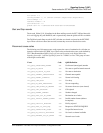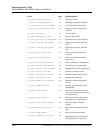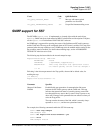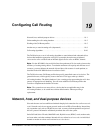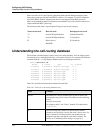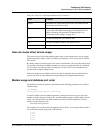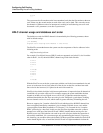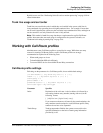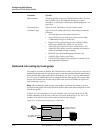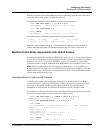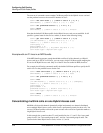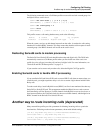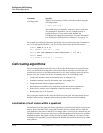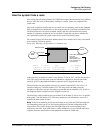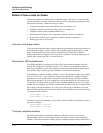
Configuring Call Routing
Working with Call-Route profiles
APX 8000/MAX TNT/DSLTNT Physical Interface Configuration Guide Preliminary May 9, 2000 19-5
Hybrid Access card. See “Dedicating Series56 cards to modem processing” on page 19-9 for
related information.
Trunk line usage and sort order
Trunk lines are sorted in the order in which they are installed in the system, with lines in
lower-numbered slots preceding those in higher-numbered slots. For example, if more than
one E1 card is installed, the system uses the card in the lower-numbered slot first, and begins to
use the second E1 card only when the first one is fully utilized.
Note: This method of trunk line usage introduces a requirement for explicit Call-Route
profiles when more than one trunk group is configured for the system. For details, see
“Outbound call routing by trunk group” on page 19-6.
Working with Call-Route profiles
Administrators create Call-Route profiles to control device usage. While there are many
reasons for creating Call-Route profiles, explicit Call-Route profiles are strongly
recommended or required in the following cases:
• When trunk groups are in use
• To bundle Multilink PPP calls efficiently
• To reserve HDLC devices for multilink Frame Relay connections
Call-Route profile settings
Following are the parameters in a Call-Route profile, shown with default settings:
[in CALL-ROUTE/{ { any-shelf any-slot 0 } 0 } 0 }]
index* = { { { any-shelf any-slot 0 } 0 } 0 }
trunk-group = 0
phone-number = ""
preferred-source = { { any-shelf any-slot 0 } 0 }
call-route-type = any-call-type
Parameter Specifies
Index Destination of the call route. A device address is followed by a
call-routing database entry number (starting with zero) in the
following format:
{ { shelf slot item } logical-item } entry }
If you create more than one call route for the same destination, the
entry numbers must be unique for each Call-Route profile. Entry
numbers do not have to be sequential.
Trunk-Group
Trunk group number. Enables the system to route calls to the
specified destination on the basis of trunk-group information
provided by a call.



